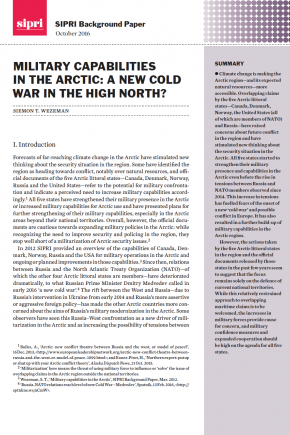Military Capabilities in the Arctic: A New Cold War in the High North?
Climate change is making the Arctic region—and its expected natural resources—more accessible. Overlapping claims by the five Arctic littoral states—Canada, Denmark, Norway, the United States (all of which are members of NATO) and Russia—have raised concerns about future conflict in the region and have stimulated new thinking about the security situation in the Arctic. All five states started to strengthen their military presence and capabilities in the Arctic even before the rise in tensions between Russia and NATO members observed since 2014. This increase in tensions has fuelled fears of the onset of a new ‘cold war’ and possible conflict in Europe. It has also resulted in a further build-up of military capabilities in the Arctic region.
However, the actions taken by the five Arctic littoral states in the region and the official documents released by those states in the past few years seem to suggest that the focus remains solely on the defence of current national territories. While this relatively restrained approach to overlapping maritime claims is to be welcomed, the increases in military forces provide cause for concern, and military confidence measures and expanded cooperation should be high on the agenda for all five states.
I. Introduction
II. Canada
III. Denmark, including Greenland
IV. Norway
V. Russia
VI. The United States
VII. Conclusions
Abbreviations

